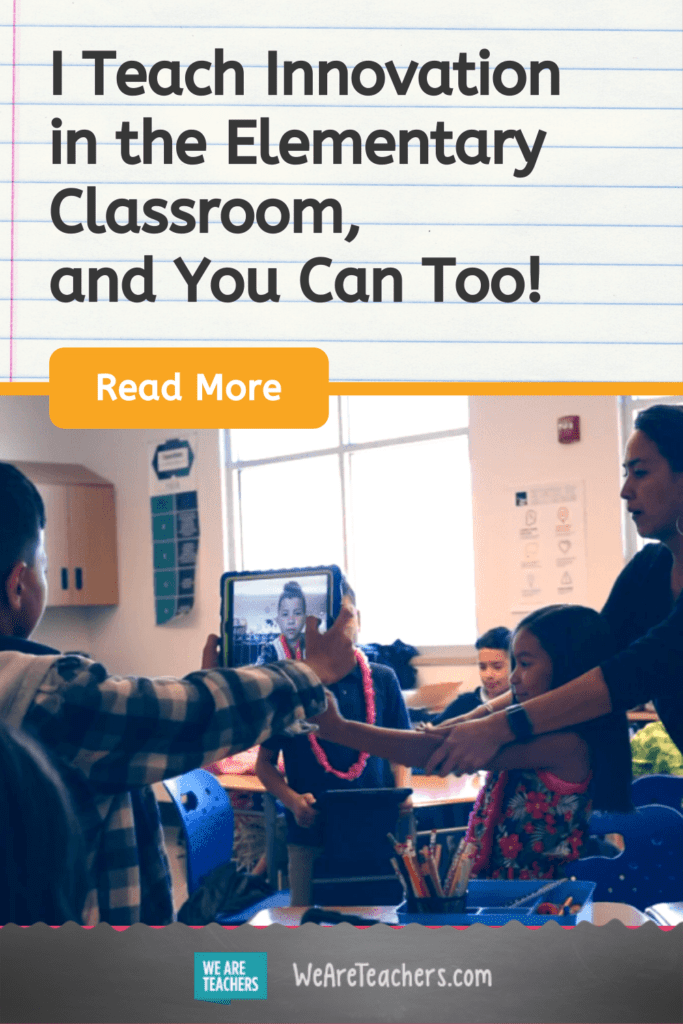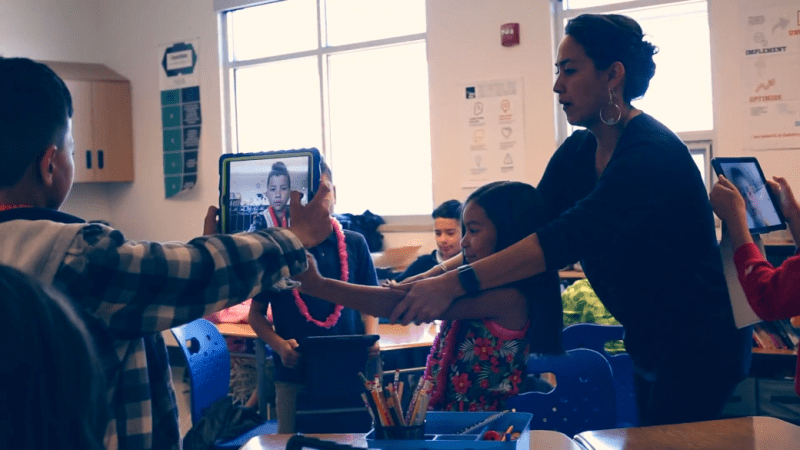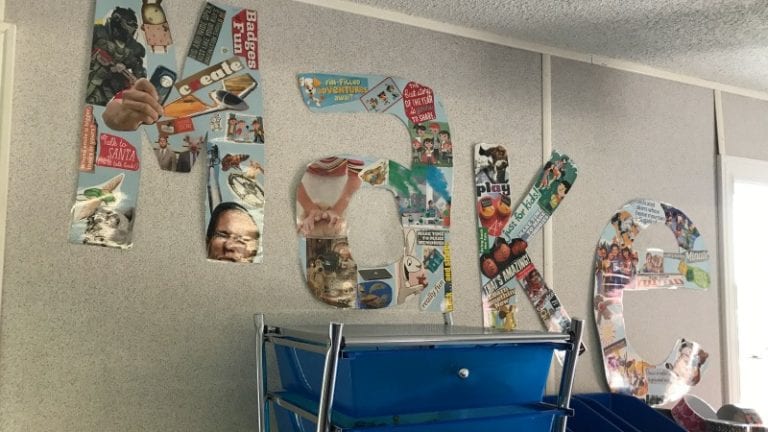Rachel Lamb has been teaching elementary school for the last 14 years. Currently a second grade teacher, in 2018, she was a winner of The Henry Ford’s Innovation Nation Teacher Innovator Awards. But, despite her successes, her focus has been more on her failures. And, as she shares with us, believe it or not, that’s how she’s brought innovation into her elementary school classroom.
Lamb is not a teacher who is afraid to admit when she’s wrong or when a lesson she’s planned is what she calls an “epic failure.” It’s out of these moments where she believes real learning is born. She uses the actions and habits of innovators from The Henry Ford’s Model i Innovation Learning Framework to inspire her students.
Learning from failure
One of the tenets of the Model i Framework is that the actions of innovators are messy. There’s no one way of doing things, and in order to discover and learn, sometimes you fail. This is a key piece of Lamb’s teaching.
“I know a lot of teachers feel they can’t make mistakes. They feel it minimizes their authority in the classroom. But, showing students that I make them every day teaches them that they don’t have to get it perfectly the first time,” Lamb says.
“So, when I say to my students, ‘My lesson yesterday was a complete and epic failure. And today, we’re going to try it this way.’ This is how I show that I’m learning, and as long as they’re continuing to learn from what they’ve done, that’s where true innovation comes from.”
Challenging the rules
Lamb explains that one of the most exciting ways she’s brought innovation into her elementary school classroom is using the Model i concept of “challenging the rules.”
“After I explain what challenging the rules means, we say we’re going to make change specific to what you want it to be. And that really speaks to students.” She says students take that to mean that they can make a change that is important to them. And what that is varies among the students.
She says the concept doesn’t just apply to her students. But, to her as well.
“At the beginning of a school year, I ask myself, ‘Am I taking risks and challenging the rules? And how am I following through and making sure my teaching isn’t becoming stagnant and I’m not becoming too comfortable with what I’m doing?’ Because, as soon as that happens, you lose student engagement. And it’s no longer beneficial for anyone involved.”
The journey of innovation
Lamb was a 2018 Teacher Innovator Award-winner in part because of her work translating The Human Body educational science app by Tinybop from English into Navajo—her father’s native language. She has continued to apply that innovation to her lessons.
It’s her innovation journey, in a way. She uses her cultural identity as a member of the Navajo Nation to inspire and teach students about the nation’s history and how her people continue to fight for equal rights.
“My father is from the Navajo reservation. He went through the entire boarding school experience. Just as you would read in history books, that was his experience,” Lamb says.
She says she uses her father’s story as a lesson about U.S. history and that not everything is rosy in our nation. “Particularly when we talk about water on the Navajo reservation.” The Navajo Nation has a long history of being denied legal right to water access, and one in three Navajo citizens doesn’t have indoor plumbing. A family is limited to using just a few gallons of water a day.
“A lot of our science curriculum goes over water and making sure we’re recycling and reusing. I connect this to issues in our country—looking at the Navajo Nation and Flint, Michigan, for example. It’s something that will help them understand that this is not just a place where we go to school and then we’re done. This is a place where they can start expanding their thinking.”
Inspiring learning
Lamb points to a recent lesson where she used Model i to bring innovation into her elementary classroom via an unconventional path.
She was looking at the evolution of the Model T and how innovation has pushed automobiles forward. But then she took the next step and used a selection of The Henry Ford’s digital assets and applied them to a lesson she already had in the works.
“When we looked at the evolution of cars, I was able to integrate that into an Earth Day unit. We looked at the progression. And started to explore how we could innovate even further to improve the environment around us. So, students were coming with car designs that would sweep up trash or vehicles that run on plastic bottles. Some of the cars could spray water and keep the environment clean and hydrated,” she explains.
Interested in bringing more innovation to your own classroom?
Learn More About the Model i Framework



